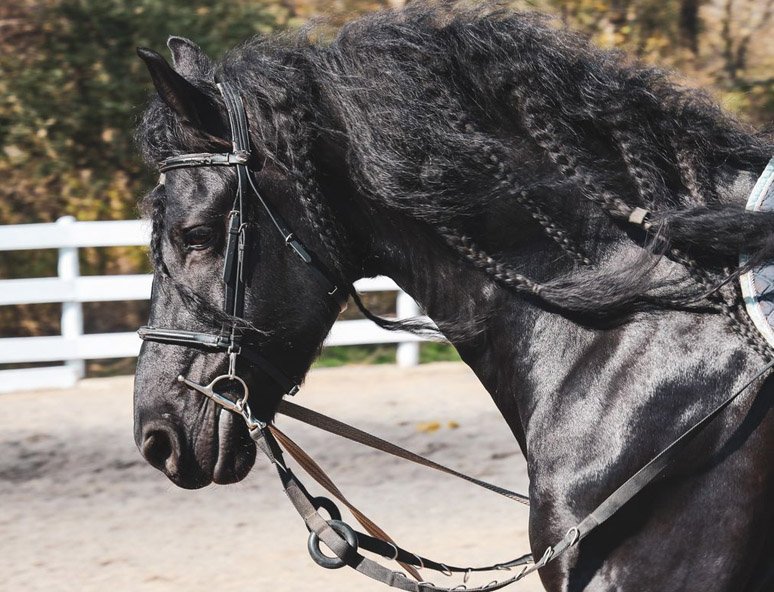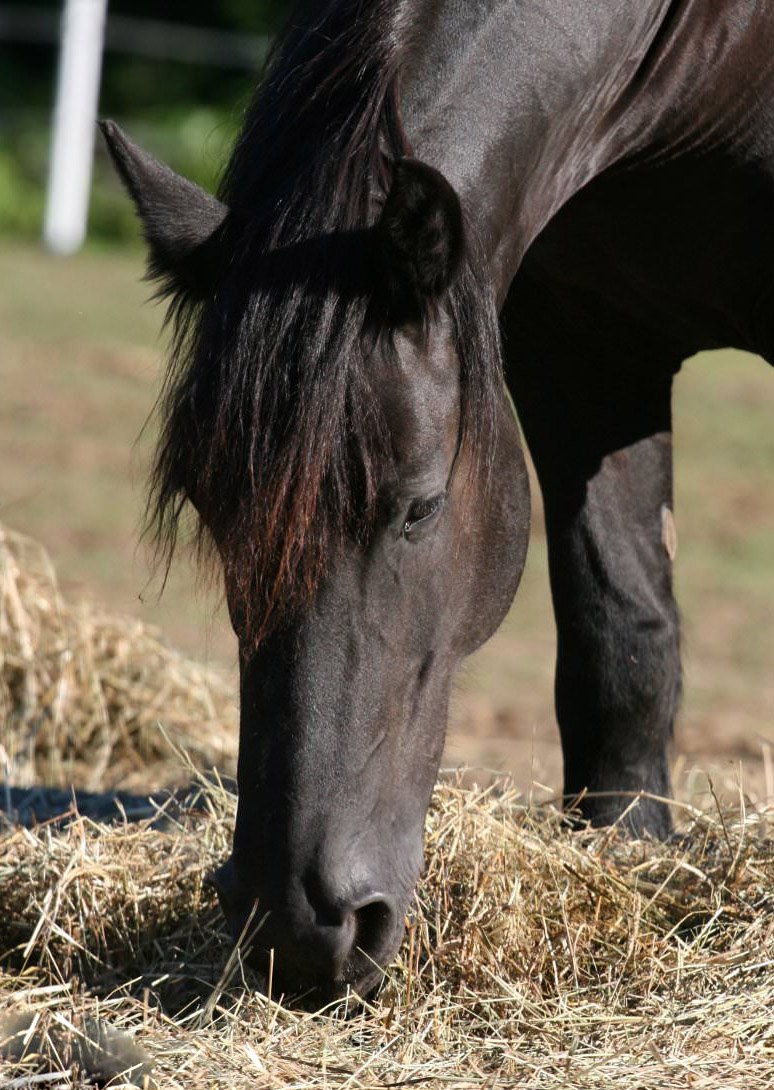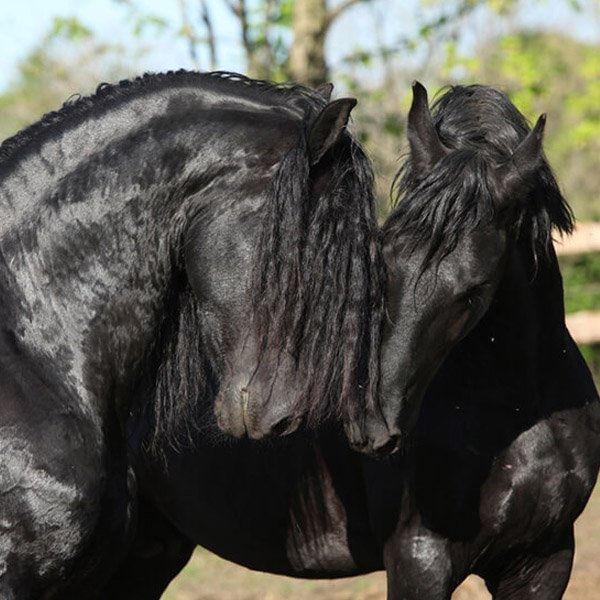
All horses require a high level of care, and the Friesians are no different. You should always ensure you feed them a nutritious diet, provide them with adequate exercise, and keep up with regular veterinary care. Also, Friesian horses should have their stalls mucked out in the morning and night. “Mucking” is the removal of manure and urine from a horse’s living area. Friesian Riders check their horses’ hooves daily.
If you really want to pamper your Friesian, consider adding some CBD (Cannabidiol) to their daily routine. CBD is a natural hemp extract that promotes balance and wellbeing in horses, it can also boost several aspects of your equine’s condition. Cannabidiol has a soothing effect, so it can assist in training. Some owners also use it to comfort their mount’s muscles and joints.
Friesian Horse Training
Friesian horses respond well to training, especially if you’re training them in dressage. The word “dressage” comes from the French word which means “training.” Dressage is a competition in which judges score a horse’s ability to perform specific movements. A horse competing in dressage will trot around the field, the rider guiding it through the various moves. Friesians’ high-stepping gait makes them naturally great at “The Passage” movement.
Even if you’re not entering your Friesian in any competitions, an equine still needs to get its exercise. Take your horse outside every day so it can walk around, get some sunshine, and roll in the grass. If you’re looking for more controlled exercises, try riding in the ring or on a trail.


Friesian Horse Nutrition and Feeding
As a guideline, a horse should eat 1.5-2.5% of its body weight in forage every day. Forage refers to long-stem hay, pasture grasses, and legumes. An equine vet can help determine your horse’s specific nutritional requirements. The amount of food your horse consumed daily should correlate with its activity level.
Thanks to centuries of selective breeding, Friesians are big horses with big bones. Keep an eye on their weight, as general feeding guidelines might not be the best diet for your specific equine’s bone structure, energy levels, and daily workload. Discuss options with a veterinarian and send your pasture grass or hay in for lab testing to see if you should modify your horse’s diet.
Forage is the cornerstone of an equine’s diet, but it’s not the only thing every Friesian needs. If your horse isn’t getting all the nutrients it needs, a grain or nutritional supplement might be necessary. Grains can target a particular deficiency an animal has, such as a lack of fiber or carbohydrates.
Popular grains include oats, barley, corn, wheat, and milo. Once you’ve discussed your horse’s nutritional needs with an expert, they can advise on whether grain is recommended, as well as what kind. The horse will also need plenty of water (5-10 gallons daily). A Friesian needs the same trace minerals as other horses (zinc, copper, manganese, and cobalt). These minerals boost the animal’s growth, coat, and immune system. An easy way to get your horse the trace minerals it needs is by using a salt block.
Coat Color and Grooming
Friesian horses have incredible hair! It’s one of their most distinguishing features and also one of their biggest hassles. A thick mane and tail, and feathers on the lower legs, make this horse require more grooming than other breeds.
After training, hose the sweat off of your horse to minimize flies. A full, deep bath at least once a month makes for an especially happy equine. Use a shampoo with low suds, as this will make it easier to handle the large volume of hair you’ll be working with. You may have to scrub a little longer and harder than with other equine breeds.
You can wash a Friesian’s feathers (the hair on their lower legs), tail, and mane similar to how you would clean your own hair. Shampoo and conditioner are great for these thick-haired beauties. Use a towel to dry your Friesian after a quick hose-down. If you’ve given the horse a full bath, use a blow-dryer to remove all moisture. Blow-drying is essential for this breed because its heavy coat can trap moisture, leading to hoof damage or bacterial growth.

Trimming

Feathers

Tail

Mane

